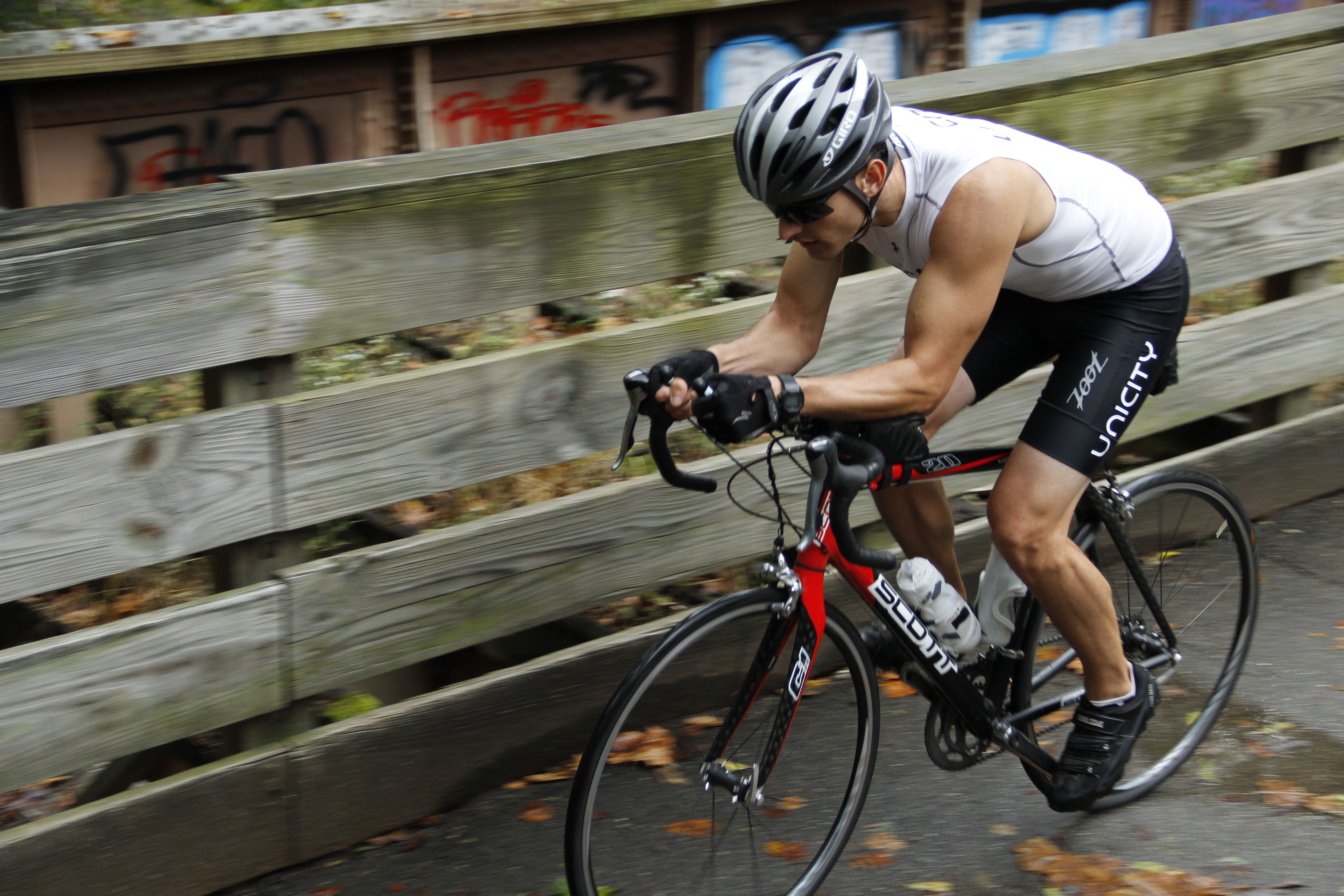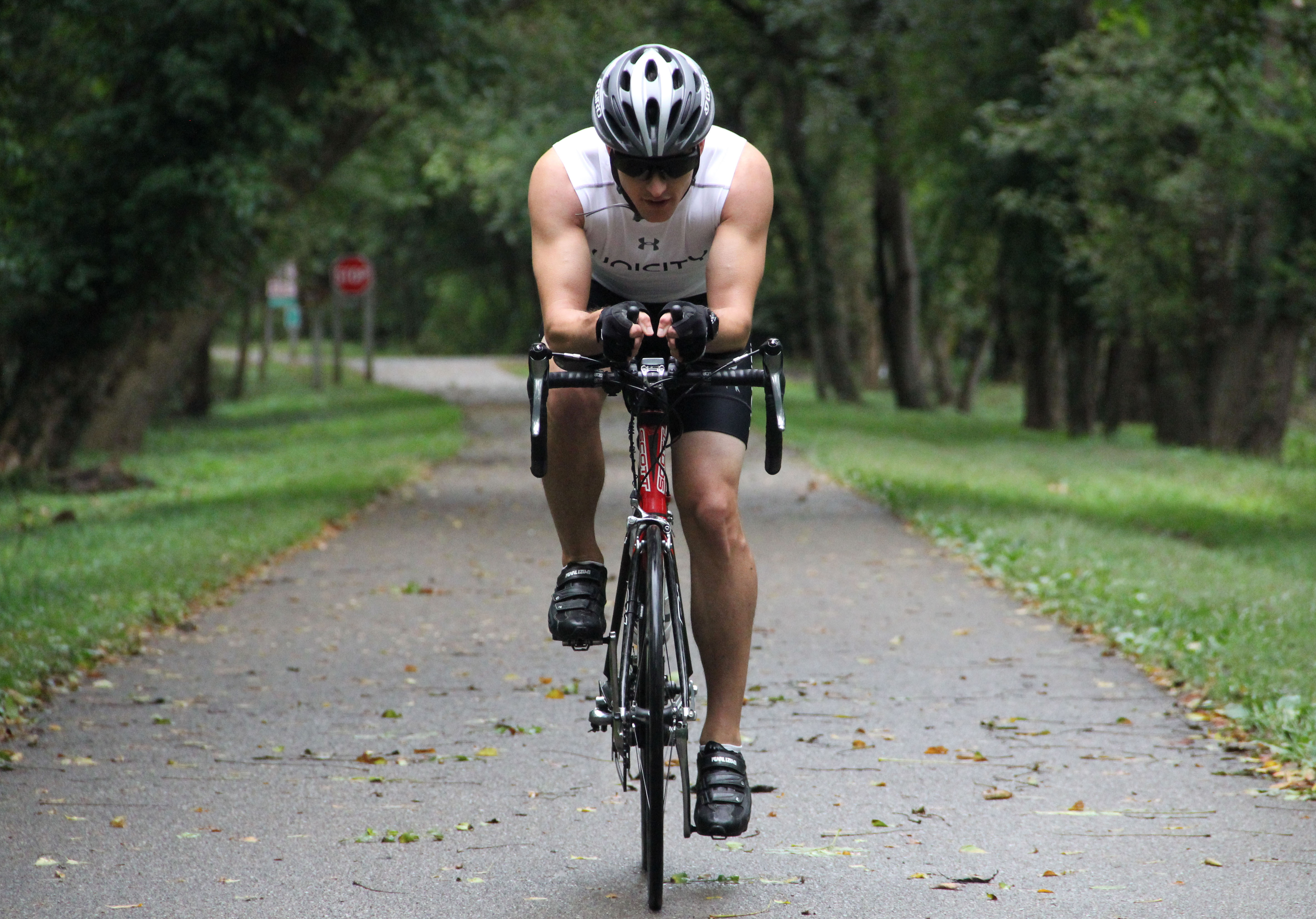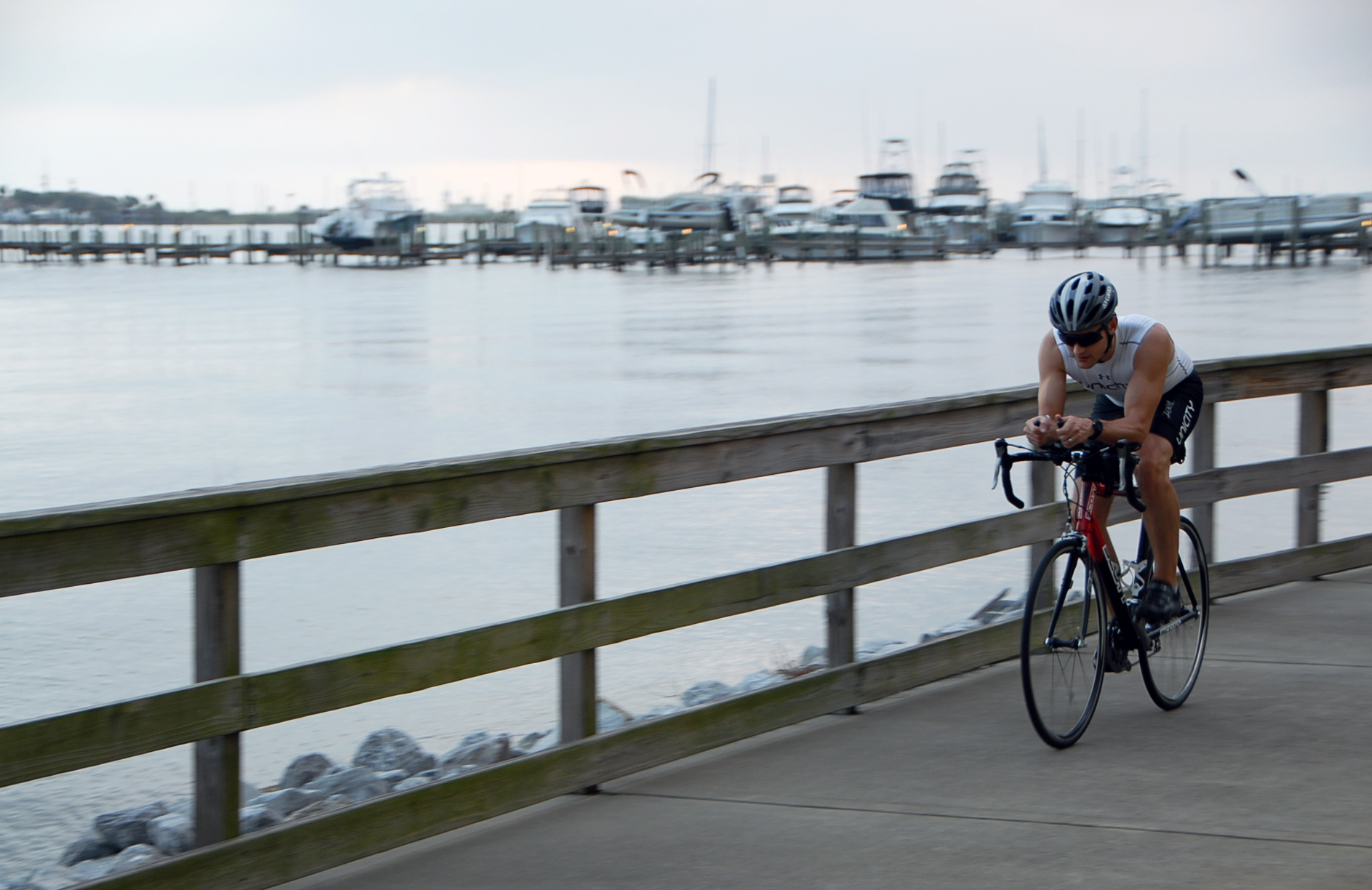
So after you swim 2.4 miles, you have to hop on the bike and ride 112 miles. It isn’t as daunting as it sounds after you start riding regularly.
To start preparing for the bike, you need to gather a smattering of gear. This includes, a road bike, helmet, cycling shoes, water bottles, bike computer(for tracking speed at a minimum), safety glasses(to keep bugs and rocks out of your eyes), bike shorts, form fitting shirt, bike gloves, chain lube, and a saddlebag with a tire repair kit… Cycling can get expensive really quick. In deciding how much you spend, figure out if your goal is to finish or become the next Ironman World Champion. You can get relatively inexpensive gear if you simply want to finish. To save money I bought a used road bike off of KSL/Craigslist, and it has served me very well. As I trained, I decided I wanted to take things up a notch, so I purchased a pair of aerobars to tag onto my road bike. You could easily spend $10,000 dollars on an insane carbon fiber triathlon specific bike and it may cut your time down by a healthy chunk, but an aluminum road bike will work great.
Find safe places to ride a ton of miles.
Like with the swim, I recommend starting your training by building up distance and confidence on the bike. Find safe places to ride a ton of miles. I was lucky to have a closed off paved bike trail nearby for my training where I could pick up and ride as far as my legs would take me then turn around and ride home. After you are able to cover 40 miles in a ride (meaning your legs and your bum on the bike seat can handle it), start adding some intervals where you push it really hard for 2 or 3 minutes, then recover at normal speed for a few minutes before hitting it again for a total of 4-8 times. For rides over 35 miles, you are going to want to take snacks and practice eating on the fly, but I will discuss nutrition here. Take a day and rest after you do longer or more intense rides. Your work week will put you on tempo to do one or two intense short rides during the week with long rides on the weekends.
While on the bike, you want to find a comfortable cadence (measured in RPM or times the right foot sinks in 15 seconds times 4) between 80-100 rpm. You might have to shift gears if you are on a slight hill to maintain this cadence, but this cadence range is where you will have optimum power output. Because I didn’t have a cadence meter, I hopped on an indoor exercise bike and went to spin classes occasionally to get a sense of what 80-100 rpm felt like. I also used sensors on stationary bikes to track my heart rate and power output to see how my performance was improving each week in a metric other than time it took me to ride a certain distance.

Riding with faster cyclists helped me to break out of plateaus in performance.
Make sure and get out and ride with more experienced riders from time to time. It will kick your butt to keep up with them, but they will be able to answer questions you have and give advice that ranges from “best practices of bike maintenance” to “where the best places to ride are.” I also found that riding with faster cyclists helped me to break out of plateaus in performance time and time again. There is safety in numbers, and it is just more fun to bike with a group and talk to people rather than plugging in earbuds and listening to an audiobook.
Be safe, ride hard, ride often, and learn to relax on those long rides – even when you are exhausted.

This is post 3 of 7 about my Ironman journey and pointers.